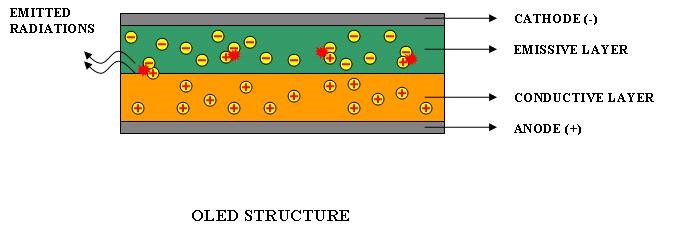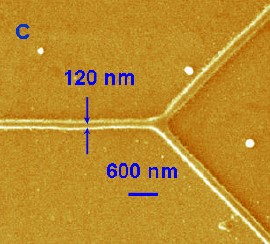- Universitat de València
- Bolink, Hendrik Jan
- PDI-Catedratic/a d'Universitat
- Coronado Miralles, Eugenio
- PDI-Catedratic/a d'Universitat
- Director/a Titulacio Master Oficial
- Director/a d' Institut Universitari
The charge injection from a metallic conductor to a molecular material is a complex process which depends on many factors such as the formation of an optimal interface (molecular semiconductor-metal), usually very reactive. However, in many cases the polymer used for the charge injection is not sufficiently conductive. In order to increase the conductivity, a strong oxidizing agent is added to the polyer as a dopant. Therefore, the dopants normally used up until now are not electrochemically inactive, such that they may oxidize or reduce the polymer, reducing the lifetime of the device. Besides, these polimers are not soluble in any solvent and they may only be disperserd in solvents in combination with a surface-active moleculal material.
Researchers of the Institute of Molecular Science (ICMOL) of the University of Valencia have developed a new charge injection layer for electro-optical devices, from metallic conductors to semiconductor or insulating materials based on organic or inorganic molecules and macromolecules with electrical or optical properties. With the proposed OLED is possible more light generation per current unit, as well as generating light at lower voltages, which results in a more energy-efficient devices.
The main applications of the technology are:
- Lighting Technology: Seeing that OLED technology used in displays has already made major advancements in efficacy and quality of light,future applications of OLEDs could include large panels or wallpaper of light for signage or decoration, folded panels or even in clothing.
- Electronic Display Applications: It is used in mobile phones, mp3 players, panelviews and even TV due to OLEDs provide good quality, excellent resolution and efficiency in flat displays.
The most remarkable advantages provid ed by this technology are:
- The charge injection layer of the invention allows obtaining a highly efficient OLED, that is, a sufficient number of charges reach the optically active layer up to levels exceeding even those provided by the standard PEDOT. That layer comprises a polymer having conjugated units and a salt mixed with the aforementioned polymer, said layer characterized in that the oxidation state of the polymer is not modified when it is mixed with the salt. It implies a major energy stability.
- Another advantage of the injection layer is that it facilitates the preparation of the conductive polymer/electroluminiscent material group when a solution-based preparation technique is used.
- The devices with this injection layer can be produced without using water as a solvent, which may be beneficial for the stability and efficiency of the devices.
- The injection layer is in its most energetically stable state, nor reduced or oxidized, and therefore is less reactive and more stable than other injection layers that are in the oxidized or reduced state.
- Patent granted
Blasco Ibáñez Campus
C/ Amadeu de Savoia, 4
46010 València (València)















